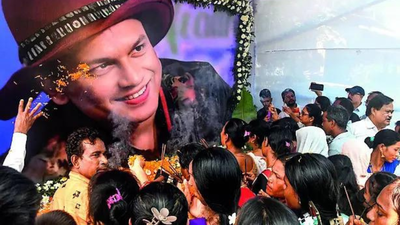
Our cruise sailed from Aswan in the late afternoon, reaching the Temple of Edfu just before sunset. It is one of the best-preserved shrines in Egypt and the largest temple built entirely of sandstone, dedicated to Horus, the falcon-headed god, and Hathor of Dendera.

According to ancient belief, the temple was built at the very site where the legendary battle between Horus and Seth took place. Every year, “Hathor travelled south from her temple at Dendera to visit Horus at Edfu,” an event symbolising their sacred marriage. This divine union was celebrated with a grand festival and pilgrimage.
It is said that the first temple of Edfu was designed by the gods Thoth and Seshat. When construction was completed, the king dedicated the temple to a triad of gods, and sixty divine beings formed a living wall around it to protect it from external threats.

That evening, we watched the mesmerising Light and Sound Show within the temple complex, which transported us back to ancient times when gods were believed to walk the land of Egypt. The mystical experience lingered within us all night.
As our cruise sailed onward, we enjoyed a grand dinner and returned to our cabin late at night. The sight that greeted me was magical — it was a full moon night, and the moonlight shimmered on the waters of the Nile. Our balcony was bathed in silvery light that spilled into the cabin, as if the moon itself was searching for a “sleeping beauty.” We sat quietly on the balcony for a long time, soaking in the serene beauty, until I drifted into sleep.

By dawn, we arrived at Luxor, the ancient city of Thebes, built around 1,400 BCE, often called the world’s greatest open-air museum. On the eastern banks of the Nile lie the magnificent ruins of the Egyptian temple complex, while across the river, on the western bank, stand the grand monuments, temples, and tombs, including the Valley of the Kings and the Valley of the Queens.
Luxor was the city of Amun, who later became Amun-Ra, the Sun God. The Luxor Temple is dedicated to the rejuvenation of kingship and was the coronation site of many pharaohs. The Avenue of Sphinxes, lined with human-headed sphinxes, once connected Luxor to the Karnak Temple. During the annual Opet Festival, the cult statue of Amun was carried down the Nile from Karnak to Luxor to be united with his consort Mut, symbolising fertility and divine renewal.

The Karnak Temple Complex, a vast ensemble of temples, pylons, chapels, and monuments, was inscribed as a UNESCO World Heritage Site in 1979. It is the second most-visited historical site in Egypt after the Giza Pyramids. The Great Hypostyle Hall in the Precinct of Amun-Re covers 1.2 acres and contains 134 colossal columns arranged in sixteen rows — 122 of them rising 33 feet high, and 12 towering 69 feet — each nearly 10 feet in diameter. The intricate interweaving of deities across millennia left me in awe; the scale and grandeur of those columns rivalled even the pyramids.

Next, we crossed the Nile to visit the Valley of the Kings, where for nearly 500 years, rock-cut tombs were carved for pharaohs and powerful nobles. The valley contains 65 tombs and chambers, including those of Ramesses I to Ramesses X. The tomb of Tutankhamun, one of the most famous archaeological discoveries in the world, also lies here and is a UNESCO World Heritage Site. These tombs were filled with treasures for the afterlife, though many were later looted by grave robbers.
The nearby Valley of the Queens served as the burial place for queens, princes, princesses, and high-ranking officials. In ancient times, it was known as Ta-Set-Neferu, meaning “The Place of Beauty” or “The Place of the Royal Children.” The main wadi holds 91 tombs, and the surrounding valleys — the Valley of Prince Ahmose, the Valley of the Rope, the Valley of the Three Pits, and the Valley of the Dolmen — contain another 19. It, too, is a UNESCO World Heritage Site.

Most tombs here are simple, with a burial shaft and chamber, while some were expanded to accommodate multiple burials. The tombs of several royal princes, princesses, and nobles can be found here.
We then visited the Mortuary Temple of Hatshepsut, an architectural masterpiece nestled in the cliffs. Queen Hatshepsut, daughter of Thutmose I and the Great Royal Wife of Ahmose, became regent after the death of her husband and half-brother Thutmose II. Initially ruling on behalf of her young stepson Thutmose III, she later proclaimed herself Pharaoh, adopting full royal titles and ruling as co-regent.

Hatshepsut skilfully combined both masculine and feminine attributes, presenting herself as both “mother and father of the nation.” Her reign was marked by peace, prosperity, and monumental achievements. She was among Egypt’s most prolific builders, commissioning projects like the Karnak Temple additions, the Red Chapel, and her stunning Mortuary Temple at Deir el-Bahari. In 1903, archaeologist Howard Carter discovered tomb KV60 in the Valley of the Kings, containing two female mummies, one believed to be Hatshepsut herself.
The next day, though we witnessed a hot-air balloon ride, we didn’t opt for it due to the weather. I went for a swim in the pool on the deck, cooling myself in the heat. We attended the Quran session on the cruise and were enlightened with many unknown prophecies of Prophet Muhammad, which taught love, peace, harmony, unity, and kindness. On our last night aboard the cruise, I joined the Egyptian dancers after dinner. They were delighted to see me effortlessly follow their rhythmic moves almost perfectly.
From Luxor, we returned to Cairo, spent a day there shopping for “attar, Egyptian music CDs, and Egyptian dresses for the kids.” The next day, we flew back home. Egypt was not what I had imagined — it was far more. It transcended the grandeur of the pyramids, immersing me in a world of divine mystery and ancient wisdom. Though more than twenty years have passed, I still feel as if it were only yesterday — one of the most enchanting experiences of my life.
Disclaimer
Views expressed above are the author’s own.
END OF ARTICLE





